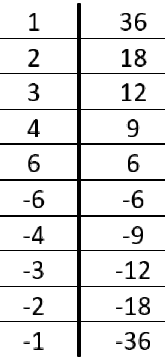√x - 6x√6x = 1, find the value of x
This is what I did.
[math]\text{I multiplied both sides of the equation by} \sqrt{x}[/math][math]x-6=\sqrt{x}[/math][math]\text{ I took the square of both sides to obtain}[/math][math]x^2-12x+36=x[/math][math]\text{I then rearranged the terms.}[/math][math]x^2-11x+36=0[/math][math]\text{I discovered that the resulting quadratic equation cannot}[/math][math]\text{be factorized so I tried using the quadratic formula.}[/math][math]\frac{-11 \pm \sqrt{-23}}{2}[/math][math]\text{I am stuck here as} \pm \sqrt{-23}[/math][math]\text{is a complex number}[/math][math]\text{What do I need to do now?}[/math]
Please how do I create a line indent using latex?
This is what I did.
[math]\text{I multiplied both sides of the equation by} \sqrt{x}[/math][math]x-6=\sqrt{x}[/math][math]\text{ I took the square of both sides to obtain}[/math][math]x^2-12x+36=x[/math][math]\text{I then rearranged the terms.}[/math][math]x^2-11x+36=0[/math][math]\text{I discovered that the resulting quadratic equation cannot}[/math][math]\text{be factorized so I tried using the quadratic formula.}[/math][math]\frac{-11 \pm \sqrt{-23}}{2}[/math][math]\text{I am stuck here as} \pm \sqrt{-23}[/math][math]\text{is a complex number}[/math][math]\text{What do I need to do now?}[/math]
Please how do I create a line indent using latex?

